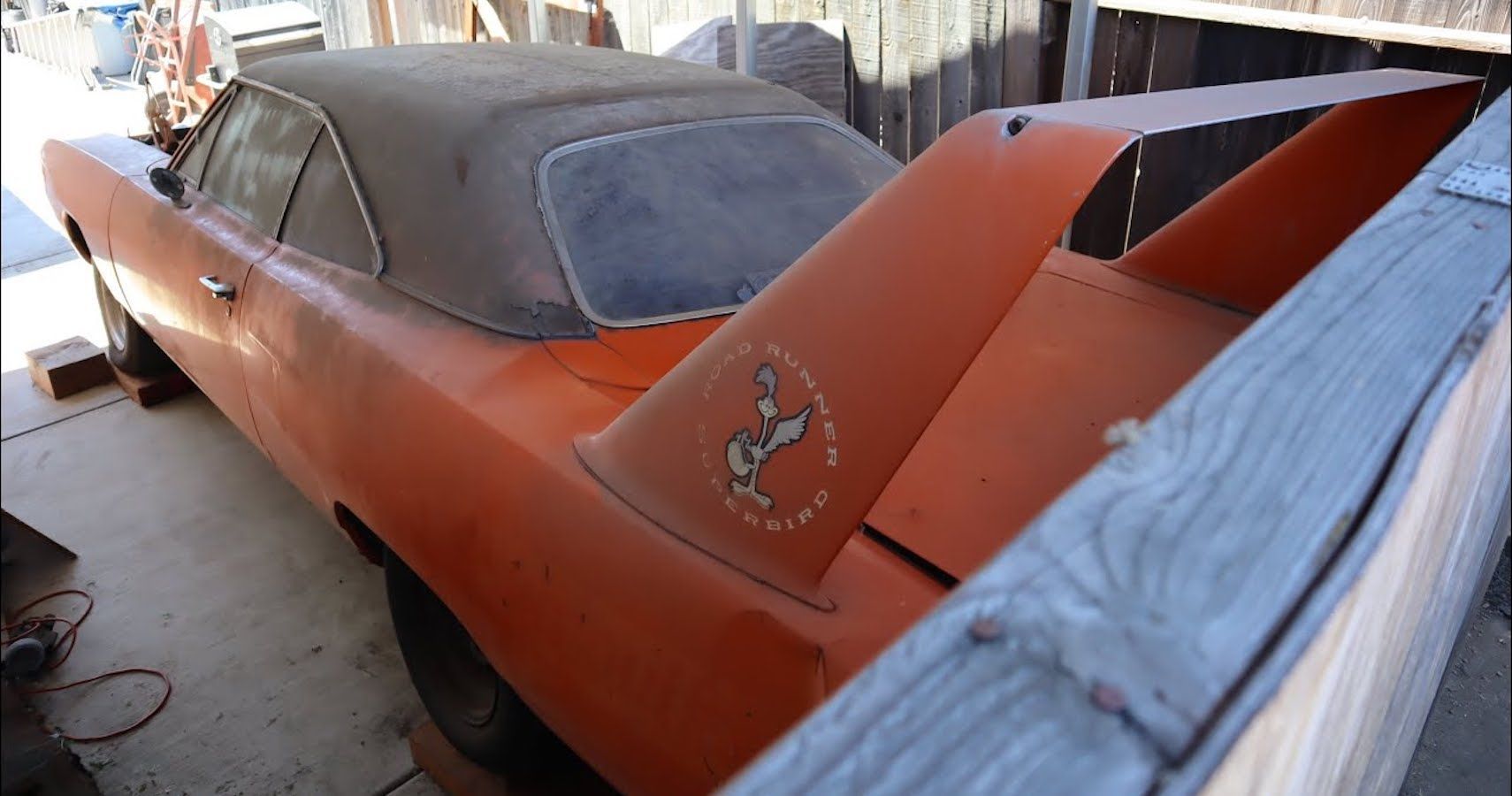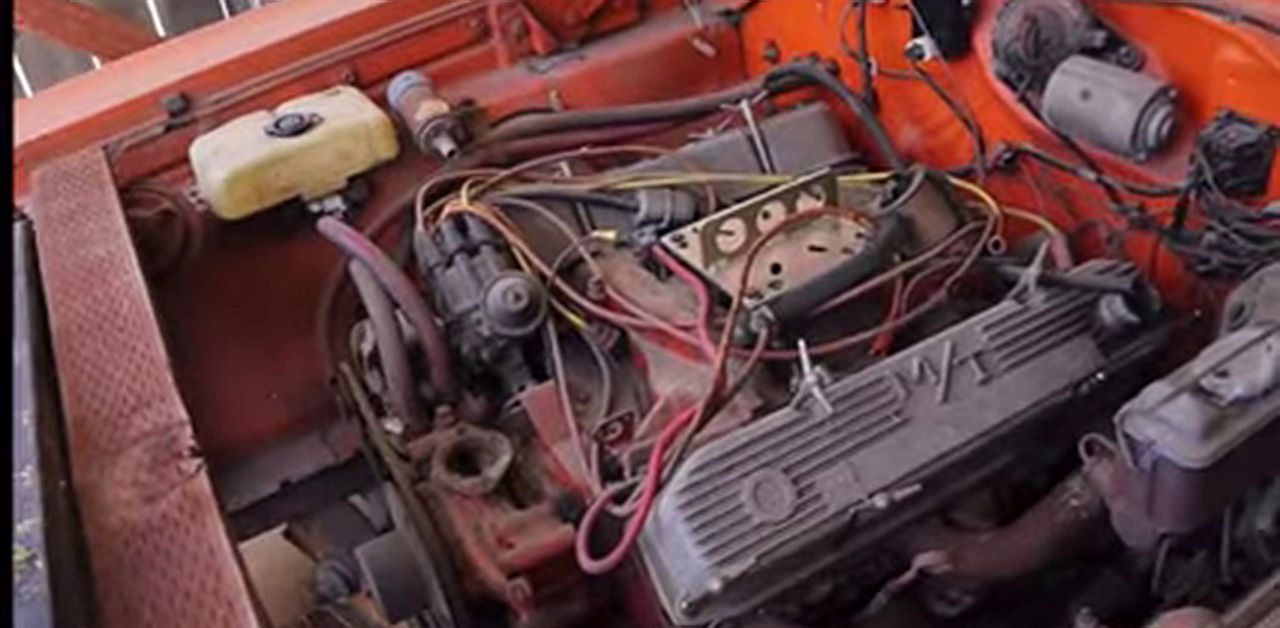In the late ‘60s, Plymouth planned on building a legendary muscle car. This was not only going to take part in racing but take over and win. And they did. In 1970, the Plymouth Superbird came into the scene. It had a stylish, sporty design that set it apart from the rest. Under the hood, it offered the top-of-the-inline 426cid Hemi V8 that made up to 425 hp. This engine transferred the power to the wheels via a 4-speed manual transmission.
In many ways, the Plymouth Superbird was every racer’s dream. The vehicle dominated the NASCAR racing scene, winning up to 18 races that year. Then, NASCAR banned the Plymouth Superbird for the succeeding year. Over the decades that followed, a majority of these vehicles became street-legal and attracted lots of customers. Today, there are models still out there, but some of them remain dormant. One of them is this Plymouth Superbird sitting in a garage.
Dezzys Speed Shop is a YouTube Channel that takes us through a lot of barn finds, restorations, and many other things. In one special YouTube Episode, they visited and walked us through a Plymouth Superbird, the legendary classic racing vehicle of 1970. The owner is an old-time street racer who raced in the car for more than a decade. He acquired this Plymouth Superbird in 1971, only a year after the Plymouth came into the market. When the vehicle sustained a lot of damage to its body, the owner parked it in his garage. He waited to repair it and get it back on the road again.
After buying this Plymouth Superbird in 1971 and racing it mutliple times, the owner left it idle for more than three decades.
Plymouth Superbird Sitting Since The Early ‘90s
At a glance, this classic Superbird looks in pretty good shape. The most notable damage is on the left front end. It's bashed in. The owner says the car got this damage during a street race. Somewhere during one of his races, his opponents cut him off on the road, which led to the Superbird side-ending the other car. The front would require a total makeover and paint.
Other significant damage is on the left rear end. Like the front, the rear end is also knocked in. Again, this damage is the result of an intense street race. It's clear that the owner liked to have lots of fun in his Plymouth Superbird. As we said earlier, these vehicles were beasts of the drag strip during their time. Everyone who had one always looked for any opportunity to push the Superbird to its limits in a race.
The rear sides also show signs of damage, with minimal paint patches and bumps that would likely need sanding and re-coating. One thing that’s hard to miss is the rust. It’s actually amazing to see that most of the body hasn’t suffered much rust damage. But some rust is visible across the body, with small hints spanning from the bottom part of the front and rear bumpers. Remember, most of these classic cars didn’t roll out of the production line with extra layers of coating to prevent rusting. This is just steel with paint on it and isn’t immune to rust. The chassis, in particular, has more hints of rust, but they don’t seem too deep. The roof is still intact, along with all the windows. Some parts of the inside still look intact, with minor dust. The Superbird has all the original door panels, instruments, and rear seats. The front seats only need some foaming and upholstering work.
The owner removed the hood when he was working on the engine. But the cover is still instant, leaning against the wall close by. The owner stated that the car has a 440ci V8 engine under the hood – inspired by the'70s Chrysler station wagon. Making around 375 hp, the engine pairs with a four-speed manual, which was standard on the original Superbird. Unlike the engine, the car still has the original radiator intact, along with some standard internal components.
This Plymouth Superbird Might Get Back On The Road
The owner says he plans on refurbishing the legendary Plymouth Superbird to its good state. In fact, he already has the replacement parts and equipment to get the job done. According to him, the only challenge would be the front end, and we couldn’t agree more. And it’s doubtful he will sell it, at least not in the meantime.
The way the owner describes his car not only shows his passion for racing, but also demonstrates the extreme bond he has with this car. If he did sell it, he might make a lot of money. These days, a good condition Plymouth Superbird retails at an average price of $208,807, according to classiccarvalue.com. Over 69 units of these classics have retailed over the last 5 years. If you’re looking in the right places, you might find yours too.


